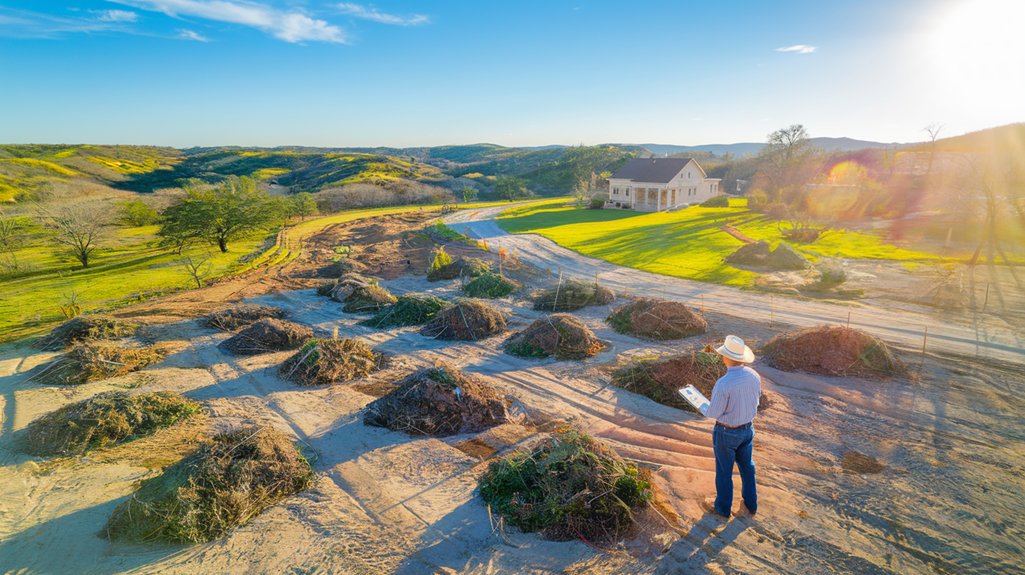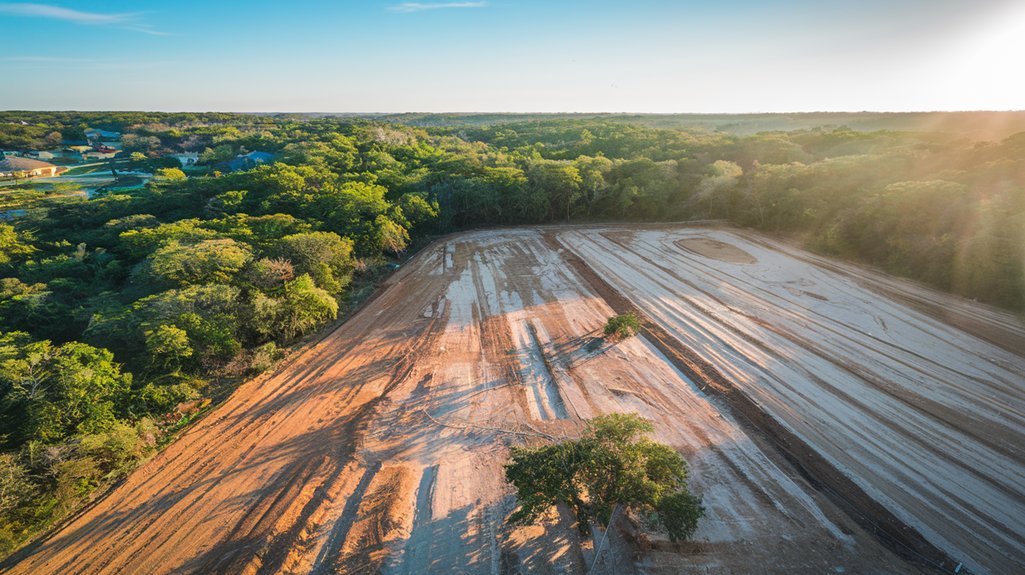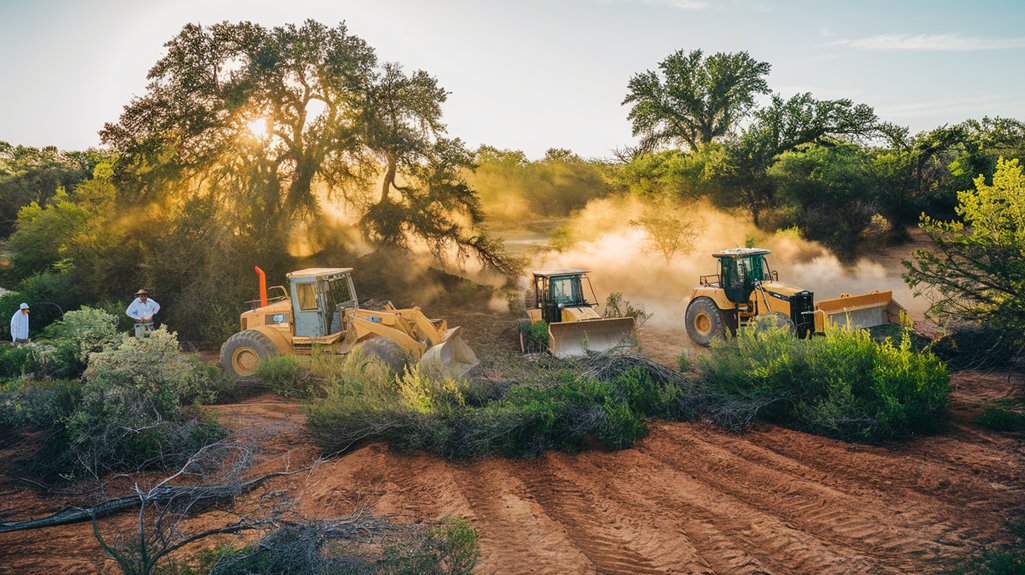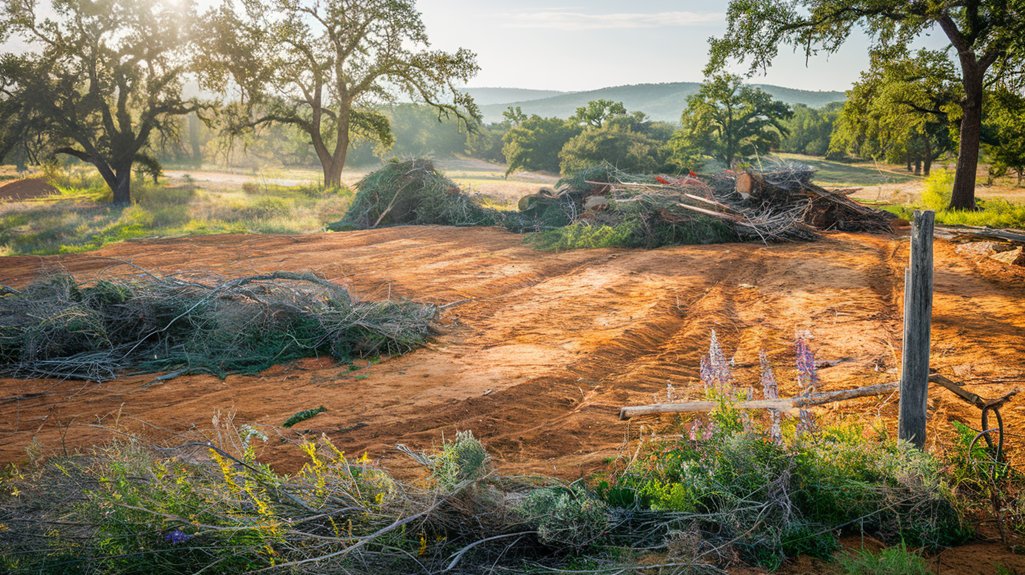Land Clearing in Central Texas: What Homeowners Should Know
When it comes to land clearing in Central Texas, understanding your responsibilities as a homeowner is critical. From navigating local permits to protecting native ecosystems, there’s much more involved than simply clearing brush. Whether you’re located in San Antonio, Canyon Lake, or Austin, Texas, thoughtful planning and execution can help you avoid delays, penalties, and environmental disruption. Let’s walk through what you need to know to get started on the right foot.
Key Takeaways
- Review zoning laws and secure permits before starting to avoid fines and project delays.
- Evaluate environmental impact to safeguard ecosystems and increase property value.
- Choose appropriate land clearing equipment based on scope and terrain.
- Balance manual and mechanical methods to minimize environmental disturbance.
- Consider hiring professionals for safety, speed, and regulatory expertise.
Understanding Local Regulations and Permits

Before initiating any land clearing, you must understand and comply with local regulations. Zoning requirements differ by county and may affect what, when, and how you can clear your land. In municipalities like Austin, permits are often required before any mechanical or large-scale clearing takes place. Make sure to consult with your city or county’s planning department for current requirements and documentation.
Assessing Environmental Impact

Land clearing can have profound effects on the local environment. Before cutting a single tree, conduct an environmental impact assessment to identify sensitive habitats, protected plant species, or erosion-prone zones. Local conservation resources like Texas Parks and Wildlife offer guidance on managing wildlife and vegetation responsibly. Preserving native flora not only benefits the ecosystem—it also enhances long-term property value.
Choosing the Right Equipment for the Job

From brush cutters to bulldozers, the equipment you select must match the job’s scope. For small-scale clearing, hand tools and chainsaws may suffice. Larger projects may demand skid steers, excavators, or forestry mulchers. Always follow safety protocols, wear proper gear, and ensure your equipment use complies with local noise and dust regulations.
Effective Techniques for Land Clearing
There are two primary land clearing methods:
- Mechanical Clearing: Fast and effective for large areas, but may cause soil compaction or erosion.
- Manual Clearing: Ideal for selective clearing and preserving valuable vegetation.
A hybrid approach often works best—use machinery for bulk removal and hand tools for detailed work around protected trees and waterways. Always consider erosion control practices to stabilize the site afterward.
Hiring Professionals vs. DIY Approaches
Professional land clearing services offer advantages like experience, speed, and regulatory familiarity. While DIY might seem cost-effective, it often requires equipment rental, labor, and permits you may not anticipate. Safety is also a major concern—clearing land involves risks like falling trees, machinery mishandling, and debris removal.
Frequently Asked Questions
How long does land clearing take?
Most projects take 1–5 days depending on acreage, vegetation density, and the methods used. Mechanical clearing is faster but requires more prep and oversight.
Are permits always required?
Not always, but if your property is in a regulated area like a floodplain or near protected wildlife zones, permits are often required. Always check local codes first.
What can I do to protect wildlife?
Mark off wildlife zones or nesting areas and avoid clearing during breeding seasons. Consider replanting native species or preserving buffer zones.
Is there a best season to clear land?
Dry months are best—typically late fall to early spring—when soil is firm and vegetation is dormant. Avoid wet seasons to minimize erosion and delays.
What vegetation should I clear?
Focus on invasive species like mesquite and prickly pear. Preserve native trees like live oak or cedar elm when possible to maintain habitat and reduce erosion.
Land clearing in Central Texas demands more than a chainsaw and a weekend—it’s a detailed process involving environmental, legal, and safety considerations. Whether you’re preparing for a new build or managing your acreage, a responsible approach will yield better, longer-lasting results. If you’re unsure where to begin, contact Valor Concrete for expert advice on sustainable site preparation and land management in San Antonio, Canyon Lake, Austin, and the surrounding Hill Country.

